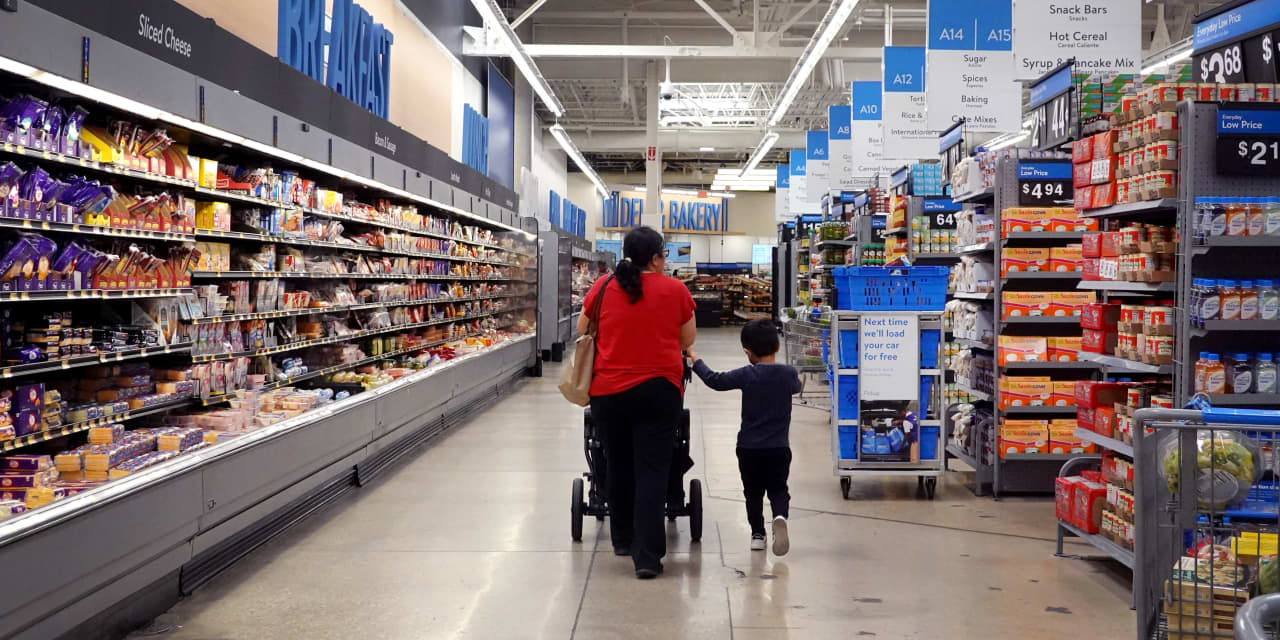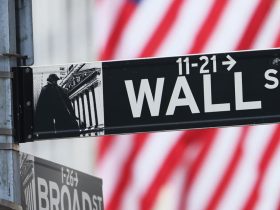Consumer staple stocks stumbled again Friday, extending their losses in the wake of Walmart’s warning about a dip in food purchases from consumers taking weight-loss drugs.
John Furner, CEO of Walmart’s U.S. operations, told Bloomberg on Wednesday the retailer is seeing signs of “just less units, slightly less calories” being purchased among the shoppers also buying so-called GLP-1 weight-loss drugs from its pharmacy business, compared with others not filling that prescription.
The comments appeared to unnerve investors, with the
Consumer Staples Select Sector SPDR
exchange-traded fund (ticker: XLP) slumping nearly 2% the next day. It’s down 3.1% for this week in response to concerns that wide adoption of the new class of weight-loss drugs could mean Americans eat and drink less.
The damage to the sector continued Friday.
Walmart
stock (WMT) fell 1.7% to $156.41. The retailer didn’t immediately respond to a request for comment.
Snack and beverage companies also saw their stocks fall. Shares of
Mondelez International
(MDLZ)—maker of Oreos, Wheat Thins, and Chips Ahoy!—slid 2.6% to $63.36. Jelly company
J.M. Smucker
‘s (SJM) stock was down 1.5% to $115.00. Neither Mondelez nor Smucker’s responded to a request for comment.
The consumer staples ETF overall fell 0.6% Friday, while the
S&P 500
rose 1.2%. The broader market index has gained 12% this year versus an 11% loss for the staples ETF.
Nearly one in three American adults are overweight, and more than 40% have obesity, according to 2017–2018 data from the National Health and Nutrition Examination Survey. On average, Americans consume about 3,800 calories a day, according to the U.N. Food and Agriculture Organization. That’s much above the recommended daily intake of 2,000 calories for women and 2,500 for men.
Bank of America analysts estimates that GLP-1, a category of drugs that includes Ozempic, could reduce a patient’s calorie intake by 15% to 20%. If 25 to 50 million of Americans take the drugs by 2030, the total calorie consumption of the nation could be reduced by 1% to 3%, wrote Bryan Spillane, an analyst covering food and beverages at the bank.
Weight-loss drugs have been a big driver of market gains this year: Shares of drugmakers Eli Lilly (LLY) and Novo Nordisk (NVO)have soared about 53% and 38% so far this year, respectively. Novo’s obesity treatment, Wegovy, received government approval in 2021, while Eli Lilly’s tirzepatide is expected to receive Food and Drug Administration approval later this year. Wall Street has high expectations for the drugs, with J.P. Morgan forecasting that Lilly’s weight-loss drugs could reach $50 billion in annual sales by 2030.
Although investors are concerned about the potential impact on sales for restaurants, snacks, and soda, those fears might be unfounded, some analysts say.
In August, Morgan Stanley analysts led by Pam Kaufman acknowledged the incremental headwind from obesity drugs on food, beverages, and grocery companies, but said they see any shift in demand as manageable.
Obesity medications’ user pool could grow to nearly 7% of the U.S. population by mid-2033, leading to a low-single-digit reduction in calorie intake, in percent terms, the analysts said at the time. That’s “manageable across most industries,” as companies can adapt through innovation and portfolio reshaping, Morgan Stanley said.
TD Cowen sees only about 1% of U.S. adult population on weight-loss drugs by 2030, the firm told CNBC Thursday. In a note last week, RBC Capital Markets analyst Nik Modi wrote that appetite-suppressing drugs are out of reach for many Americans because they are too expensive: “Consumption of indulgent salty snacks that would be considered ‘junk food’ generally over-indexes toward lower-income individuals, who are unlikely to be these drugs’ primary users.”
For the same reason, Bank of America doesn’t expect the new class of drugs to have much impact on tobacco sales. “Nicotine is used as a weight management tool largely by teens and young adult women,” wrote analyst Lisa Lewandowski, “This small subsegment of the smoking population may have limited access to these weight loss drugs, due to their income, location, and insurance coverage.”
Restaurants, too, will likely be minimally affected, wrote Bank of America analyst Sara Senatore. Although restaurant dining accounts for roughly one third of total calories consumed by Americans, food away from home is disproportionately lower in carbohydrates, on which GLP-1s appear to have the greatest impact.
Furthermore, people are usually less concerned about the nutritional content of their food when going to a restaurants. “Convenience, taste, and social connections are all reasons that people choose to eat out,” wrote Senatore, “We don’t expect those to change.”
Investors might learn more about these treatments’ impact when Walmart and other retailers report earnings in November.
Write to Karishma Vanjani at [email protected] and Evie Liu at [email protected]
Read the full article here













Leave a Reply